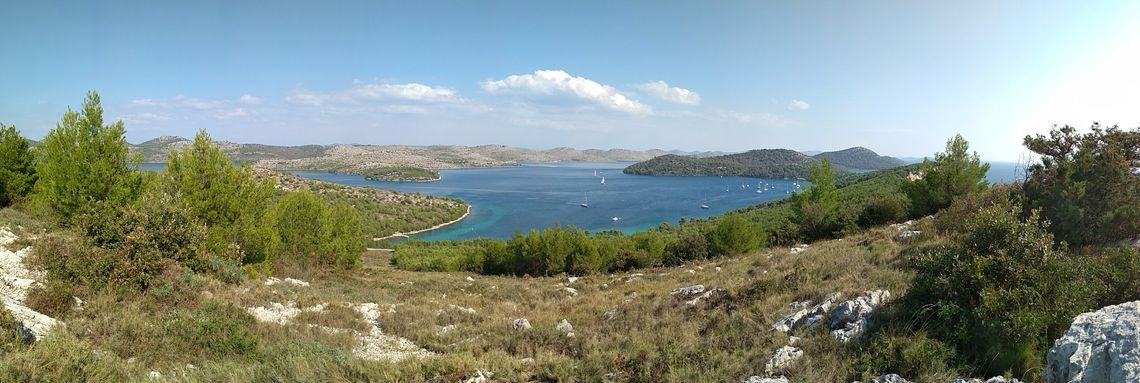
by: Carolina DelaHoz Schilling
Next research adventure (check Part 1: Mljet) took place on yet another island – Dugi otok… But of course, if there is anything you will never get enough of, it’s Croatian islands! This time we returned to the Nature Park of Telašćica, where our organization has been conducting research on the local Pinna nobilis population, also known as the nobel pen shell, since 2014.

The team, composed of a total of 8 people, arrived at site past sunset. Therefore, the first challenge was putting up tents in the dark whilst frantically scratching all exposed body parts being attacked by relentless mosquito swarms. During the first three days we focused on cleaning activities inside a small bay that had been strongly affected by abnormally heavy rains in the previous fall. A flood had washed up an immense amount of trash that had remained embedded in the bay’s seagrass and muddy sediment. With our combined efforts we managed to collect around 40 bags of trash in just two mornings, which unfortunately was only a fraction of what we had to leave behind. As beautifully pristine the Croatian coast may look like at first sight, taking a closer look it is undeniable that its marine environments are slowly being suffocated in human produced garbage. The recent boost in tourism, especially sea-based, may have been fantastic for the country’s economy, but it also leaves a visible trail of human debris under water.

The remaining days were spent surveying the thousand and one other bays that comprise the island to scout for live pen shells. Equipped with a GPS and a slate, teams of two would snorkel around the shallow areas and log every individual and its position. Whilst some areas were thriving, some others were experiencing a decline in population. Some possible causes for the death of these mollusks include pollution, anchoring of vessels, illegal fishing or capture by people ripping them out of the ground they grow in. But more recently this emblematic species is facing a new threat that is rapidly affecting whole populations all over the Mediterranean: a small parasite that penetrates the shells digestive system. Recently, this has led to a mass death of Pinnas along the coast of Spain with mortality rates of up to 100% in certain areas. Our current research aims to assess the health of the relatively unaffected populations in the Adriatic to try and prevent the local shell populations from facing the same fate.

We finished off the trip with a few fun dives to explore the colorful and mystical walls and caves that make up Croatia’s intricate underwater landscape. Amongst huge, purple gorgonian fans, phosphorescent nudibranchs, sponges and corals displaying the colors of the rainbow and massive schools of little fish and its offspring, you can almost forget all the bitter things you’ve seen as a scientist. Even if just for a few minutes.

About the author : Carolina is a volunteer from Spain who came to the organization under the EVS (European voluntary service) framework to assist with our research and educational activities in 2018. She completed a BSc in Biology in 2015 and has since then focused on gaining experience in the marine biology sector. She has worked with several NGO’s focused on shark research and outreach and became a PADI Divemaster in 2016. She has incorporated an educational project on sharks into our outreach program.


EVS (now ESS) is a part of Erasmus + Programme. Learn more, travel more, VOLUNTEER more!
2025 © Marine Explorers Society 20.000 leagues. ALL Rights Reserved.
